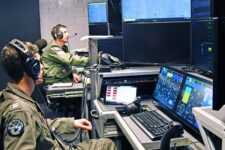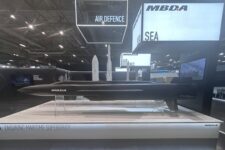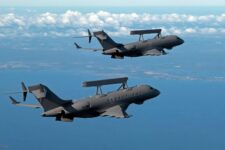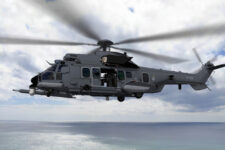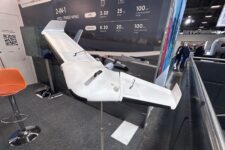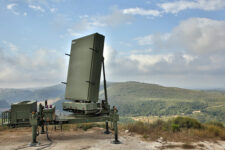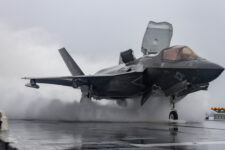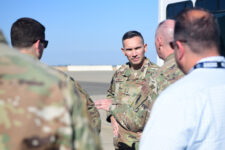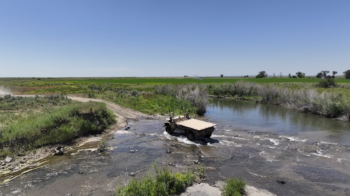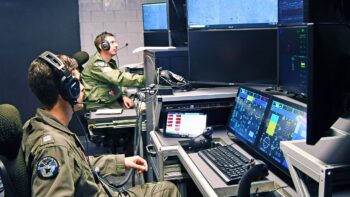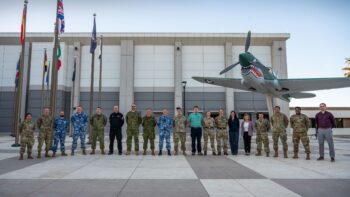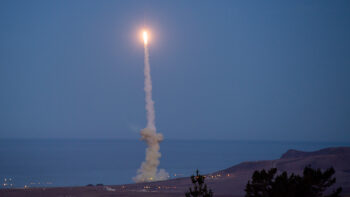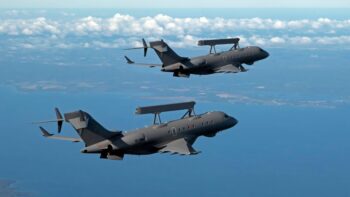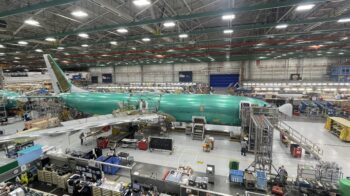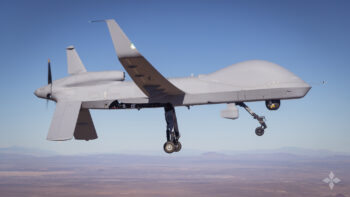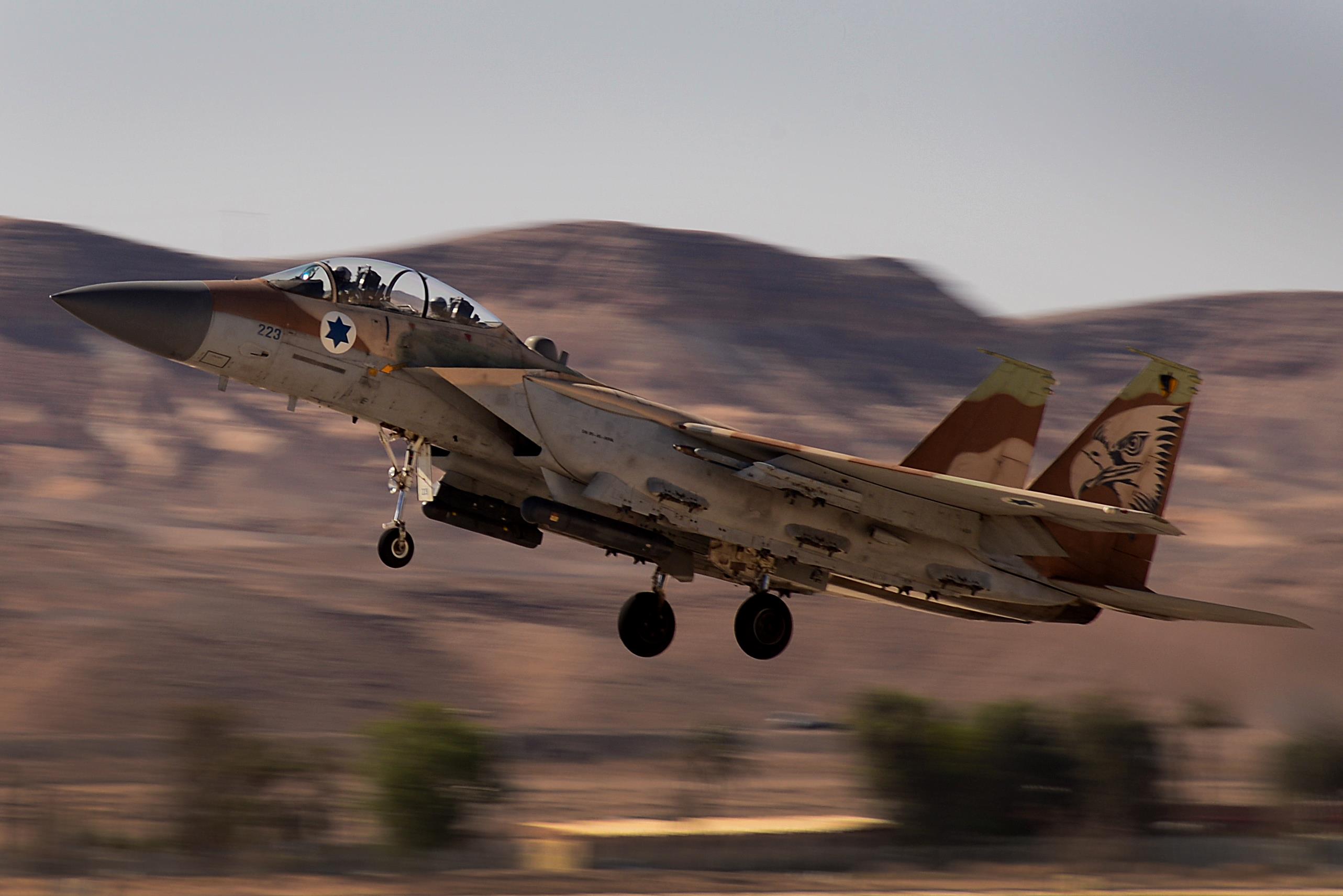
An Israeli F-15I takes off during the US-Israel Juniper Falcon exercises.
TEL AVIV: Israel and the United States, eyeing a new Iran-Syria agreement giving Teheran a stronger foothold in Syria, are boosting patrols and other actions designed to deter any aggressive acts.
For example, the Israeli Defense Forces (IDF) performed a massive attack on Iranian targets in Syria two nights ago. Syrian media report that Israel used air-ground and ground-to–ground weapon systems.
And several passengers on Mahar Air flight 1152 from Tehran to Beirut were injured last week after the plane was abruptly forced to lower altitude. The pilot claimed two American fighter jets approached his plane dangerously in Syrian airspace.
A spokesman for Central Command confirmed the incident, but claimed that only one F-15 was involved — not two as Iran claimed. He said the pilot conducted a “routine visual inspection” of the Iranian plane as it passed over a base hosting American forces in the al-Tan area of eastern Syria .
“The fighter jet maintained a safe distance of about one thousand meters from the Iranian plane,” a CENTCOM spokesman said. “The purpose of the inspection was to ensure the safety of the coalition forces stationed in the area.” The pilot acted in accordance with international rules, the command spokesman said.
Mahan Air, suspected of flying military equipment to the Hezbollah in Lebanon via Damascus, has been under close surveillance by U.S and Israeli intelligence. The U.S and Israel are watching “every small motion in the area,” one Israeli source said.
Israeli sources told Breaking Defense that all signs point to the use of Iranian civil flight to gather visual information on U.S forces.
The agreement between Syria and Iran to expand military and technological collaboration was witnessed by Syrian President Bashar al-Assad and Mohammad Bagheri, chief of staff of Iran’s Armed Forces, who came to Damascus for the signing ceremony, and.
On the Syrian side it was signed by the Minister of Defense, Gen. Ali Ayoub. A central component of the agreement is Syria’s air defense system. The Iranian Chief of Staff says the agreement’s aim is to strengthen Syria’s air defense and to reduce Israeli, Turkish and American freedom of action in Syrian airspace. A senior Syrian spokesman announced his country would receive Iranian air defense systems.
Iran reports say it will provide Syria with advanced air defense systems: the Bavar-373 surface-to-air missile system – a long-range system that is an Iranian reconstruction of the Russian S-300 with an operating range of 250 km – as well as the Khordad-3 medium-range surface-to-air missiles with an operating range of 50-75 km, and which Iran used to shoot down an American Hawk UAV in June 2019. Iran also committed to improve the Syrian aerial defense systems, which are Russian systems operated under Russian advisers.
The agreement also says Iran will help Syria to build a intelligence gathering infrastructure with the aim of putting Iranian sensors in Syria close to Israel.
Israeli sources say the main target of the agreement is to allow greater presence of Iranian forces on Syrian soil.
Udi Dekel, a senior researcher in the Israeli Institute for National Security Studies (INSS), believes the agreement was signed in part because US forces may soon withdraw US forces from Iraq and eastern Syria.
“According to assessments in Damascus and Tehran, such a development would probably allow increased Israeli air strikes along the Iraqi-Syrian border. This is likely the reason for the need to reinforce Syrian aerial defense capabilities across the entire Syrian space, which currently is unable to intercept and thwart Israeli Air Force attacks against Iranian outposts in Syria.” Dekel writes.
The researcher assesses that the agreement can be explained by Iran’s plan to set up an option to attack Israel from or through Syrian territory in response to Israeli attacks on Iranian military assets. This Iranian interest gained additional urgency after an explosion at a facility for assembling centrifuges at Natanz on July 2, attributed by many observers to Israel.
Eyeing future CCA missions, Navy teams with Lockheed, GA to test new drone control system
“This was a huge step for unmanned naval aviation,” said unmanned pilot Lt. Steven Wilster.
